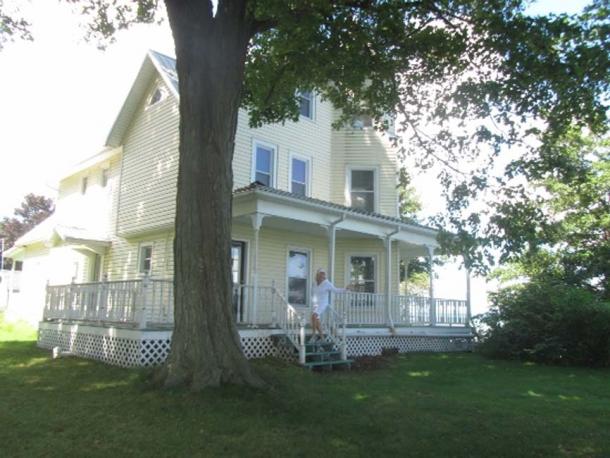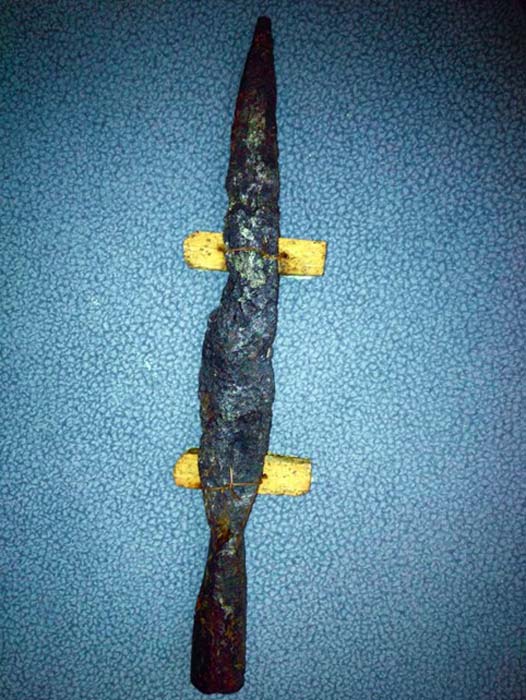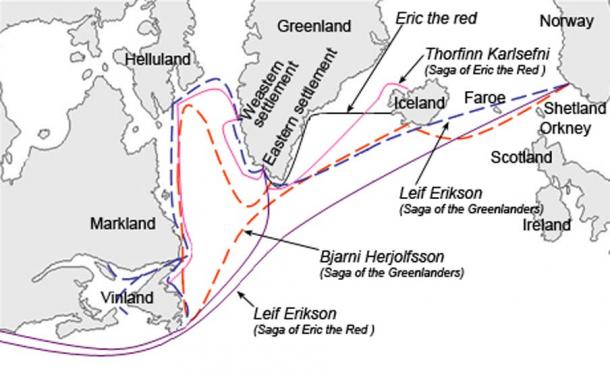A 20th-century find suggests that the Vikings may have explored North America as far south as New York. Although the reasons for its presence in Charles Point are contested, no one can deny the fact that the spearhead unearthed by Augustus Hoffman in 1929 is of Nordic origin. With precious little evidence about how or why the artifact ended up in the Great Lakes Region, researchers rely on ancient tales and legends to explain the mystery of the spearhead.
Finding the Spearhead
In the summer of 1929, a great storm blew through the Great Lakes Region and caused a great deal of property damage to homes on the shoreline. Hoffman was one of many Charles Point residents whose summer homes had been demolished by the heavy winds and torrential downpours. As he set about rebuilding his home, Hoffman found it difficult to find suitable terrain on which to lay a foundation.
Eventually, a site some 1000 ft. (304.8 m.) away from shore was selected. Hoffman began the laborious work of excavating the solid granite in order to lay pipelines. In the process, he discovered an old relic, much too big to be an arrowhead yet the wrong shape to be a dagger. Alone at the time, he pocketed the artifact, assuming that it was left over from the days when Native Americans roamed these coasts- a not uncommon find in that area.
Buy Silver at Discounted Prices

Augustus Hoffman’s house on Charles Point. (Historic Sodus Point)
Yet there was something unique about Hoffman’s find. Whereas Indigenous weaponry is typically made of stone, this artifact was made of iron and thoroughly rusted with age. Hoffman brought his find into town to the banker of Lyons, Saxon B. Gavitt.
Assuming that Hoffman’s find might have some sort of historical value, Gavitt quickly contacted James Curran, the editor of the Sault Daily Star, the local paper. Curran then suggested that they send the artifact to experts at the University of Toronto for analysis.
A Norse Spearhead
By 1930, Dr. C.T. Currelly, the curator of the Royal Ontario Museum, pronounced Hoffman’s find as an authentic Norse spearhead, most probably manufactured sometime between the 7th and 12th centuries AD. The experts also treated the iron so that the rusting would stop.
The artifact Hoffman found had a blade that measured 9.25 inches by 0.69 inches (23.5cm by 1.75cm) and a handle of 2.06 inches by 0.88 inches (5.23cm by 2.24cm). It is believed that, in its original form, both the blade and the handle would have been larger. As it stands, they are thoroughly rusted and there is even a small hole worn completely through part of the artifact. But given its design and iron composition, there is little doubt that this spearhead was originally crafted by the Vikings.

The iron spear head of Norse origin dated to 9th-14th century now in Wayne County Museum. (Ottawa Rewind)
Stories from the Sagas
The suspected date of the spearhead, 600-1100 AD, fits neatly with the widely acknowledged time period of Viking exploration of the North American coastline. According to Norse sagas, Vikings first arrived in the New World in 986 when Bjarni, son of Herjulf, came upon a beautiful wooded area of present day Canada.
The Graenlendinga Saga relates how Bjarni came to this wonderful land after getting lost in a dense fog while sailing from Iceland to Greenland. The legend describes the area as “not mountainous but well wooded and with low hills.” (It must be remembered that 1,000 years ago, the climate of Canada was much warmer than it is today.)

Graphical description of the different sailing routes to Greenland, Vinland (Newfoundland), Helluland (Baffin Island) and Markland (Labrador) travelled by different characters in the Icelandic Sagas, mainly Saga of Eric the Red and Saga of the Greenlanders. Modern English versions of the Norse names. (CC BY SA 3.0)




